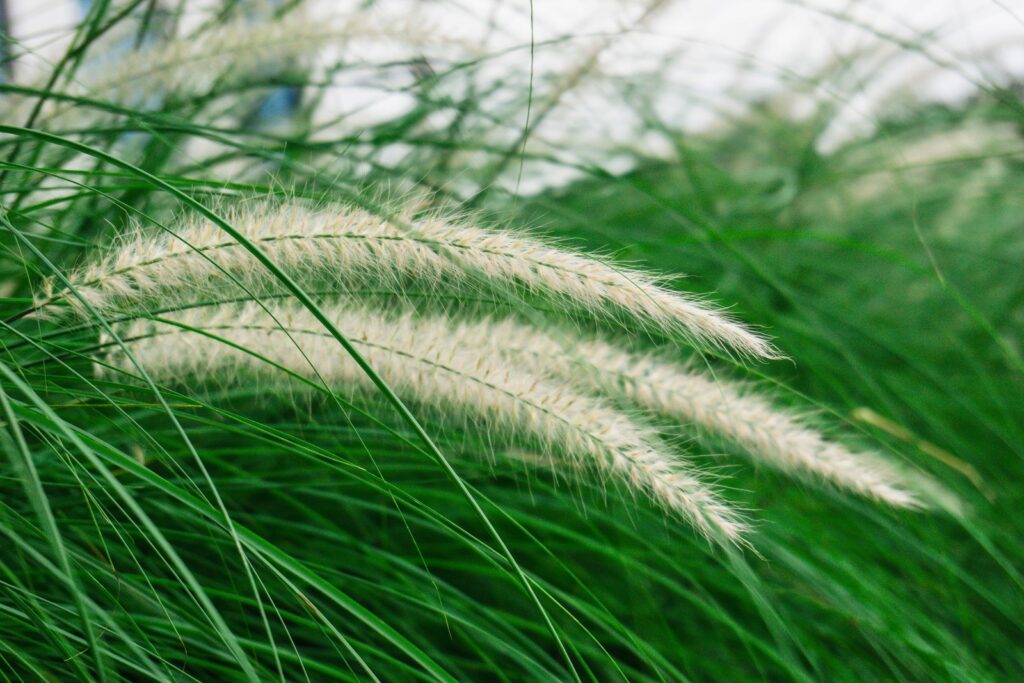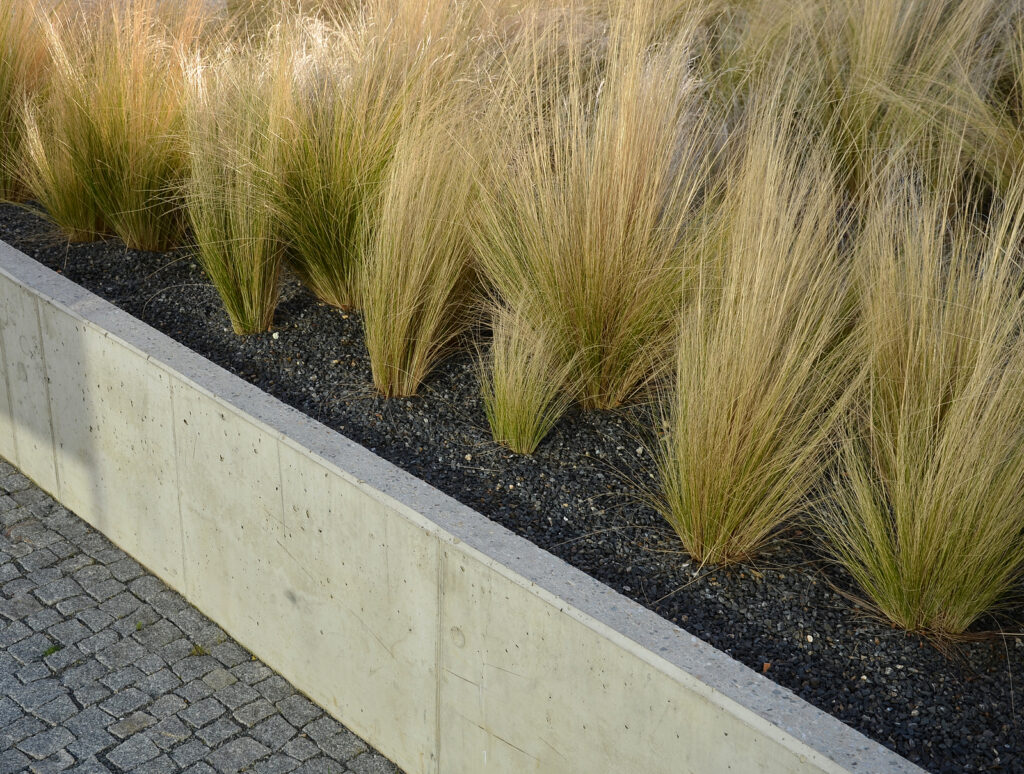Stipa – commonly called Feather grass, Needle grass, or Spear grass–is a perennial grass grown for its bright green, narrow, flat leaves and open, airy inflorescences. Stipa imparts feathery lightness and motion in the garden.
Stipa’s flowering stems divide and redivide into almost hairlike fineness. They are green at first and then become golden.
Use Stipa in a mixed or shrub border or in native gardens. Stipa can be used as a ground cover or for erosion control on slopes. The inflorescences can be dried and are sometimes dyed for use in flower arrangements.
Stipa is a genus of about 300 species of bristly, tufted, evergreen, or deciduous perennial grasses. Stipa is native to open woodland and stony slopes in temperature regions worldwide.

Stipa tenuissima, Mexican feather grass
Get to know Stipa
- Plant type: Evergreen or deciduous, perennial grasses
- Growing zones and range: Zones 6 to 10
- Hardiness: Hardy to Zone 6
- Height and width: Varies, but most species to 8 feet (2.5m) tall and 4 feet (1.2m) wide
- Growth rate: Quick to moderate
- Form and habit: Tufts
- Foliage: Linear, pleated, inrolled, occasionally flat leaves
- Flowers: Narrow panicles of flattened spikelets, often with long, feathery or bristly awns; inflorescences may be dried and dyed for use in flower arrangements
- Bloom time: Early summer to autumn
- Uses: Mixed or shrub border, specimen
- Garden companions: Late-blooming perennials, such as aster, so they can fill the gap if the cool-season grass turns brown in heat
- Common name: Feather grass, Needle grass, Spear grass
- Botanical name: Stipa
- Family name: Poaceae
- Origin: Temperate and warm-temperate regions worldwide
Where to plant Stipa
- Plant Stipa in full sun.
- Plant Stipa in moderately fertile, medium to light, well-drained soil.
When to plant Stipa
- Set container-grown Stipa in the garden in spring or autumn.
- Sow Stipa seed in containers in a cold frame in spring.

Planting and spacing Stipa
- Space most species 4 feet (1.2m) apart.
How to water and feed Stipa
- Water needs vary by species.
- Feed Stipa with an all-purpose organic fertilizer in spring.
How to care for Stipa
- Cut back deciduous Stipa in early winter; remove dead leaves on evergreens in early spring.
Stipa pests and diseases
- Stipa can suffer from damping off, rust, smut, brown patch, brown stripe, and eye spot.

Stipa propagation
- Divide Stipa from midspring to early summer.
- Sow seed in containers in a cold frame in spring.
Stipa varieties to grow
- Stipa arundinacea, Pheasant’s tail grass, loosely tufted, rhizomatous, evergreen perennial producing arching, linear, flat or inrolled, leathery, dark green leaves, to 12 inches (30cm) long, streaked orange-brown in summer, and turning orange-brown all over in winter. From mid-summer to early autumn, bears pendent panicles, to 30 inches (75cm) long, of purplish green spikelets. To 3 feet (1m) tall and 4 feet (1.2m) wide. New Zealand.
- S. calamagrostis, densely tufted, deciduous perennial with mounds of arching, linear, inrolled, blue-green leaves, to 12 inches (30cm) long. In summer, bears silvery, purple-tinted to uff spikelets in nodding, feathery, lax panicles, to 32 inches (80cm) long. To 3 feet (1m) tall and 4 feet (1.2m) wide. Southern Europe.
- S. gigantea, Giant feather grass, Golden oats, densely tufted, evergreen or semi-evergreen perennial forming lax clumps of linear, inrolled, mid-green leaves, to 28 inches (70cm) long. Bristled, silvery, purplish green spikelets, turning gold when ripe, are borne in long-stemmed, oat-like panicles, to 20 inches (50cm) long, in summer. To 8 feet (2.5m) tall and 4 feet (1.2m) wide. Spain, Portugal.
- S. pulchra, Purple needle grass, one of the bunch grasses that once covered much of California’s Central Valley and foothills—and pretty much restricted to wild gardens in its native range. Foliage reaches 1-1.5 feet (.3-.5m) high, flowering stems to 3 feet (.9m). Purplish flowers with long bristles mature, along with leaves, to golden yellow in summer. Plants then go dormant until rains arrive. No supplemental irrigation needed.
- S. splendens, densely tufted, deciduous perennial forming large mounds of arching, linear, pleated, dark green leaves, to 20 inches (50cm) long. Purple-tinted white spikelets, in large, loose panicles, to 20 inches (50cm) long, are borne above the foliage in early and mid-summer. To 8 feet (2.5m) tall and 4 feet (1.2m) wide. Central Asia, Russia, Chile.
- S. tenuissima, Mexican feather grass, Texas needle grass, densely tufted, deciduous perennial with erect, narrowly linear to filament-like, tightly inrolled, bright green leaves, 12 inches (30cm) or more long. Throughout summer, bears a profusion of narrow, nodding, softly feathery panicles, to 12 inches (30cm) long, greenish white at first, becoming buff. The whole plant billows in the slightest breeze. To 24 inches (60cm) tall and 12 inches (30cm) wide. Texas, New Mexico, Mexico, Argentina.















